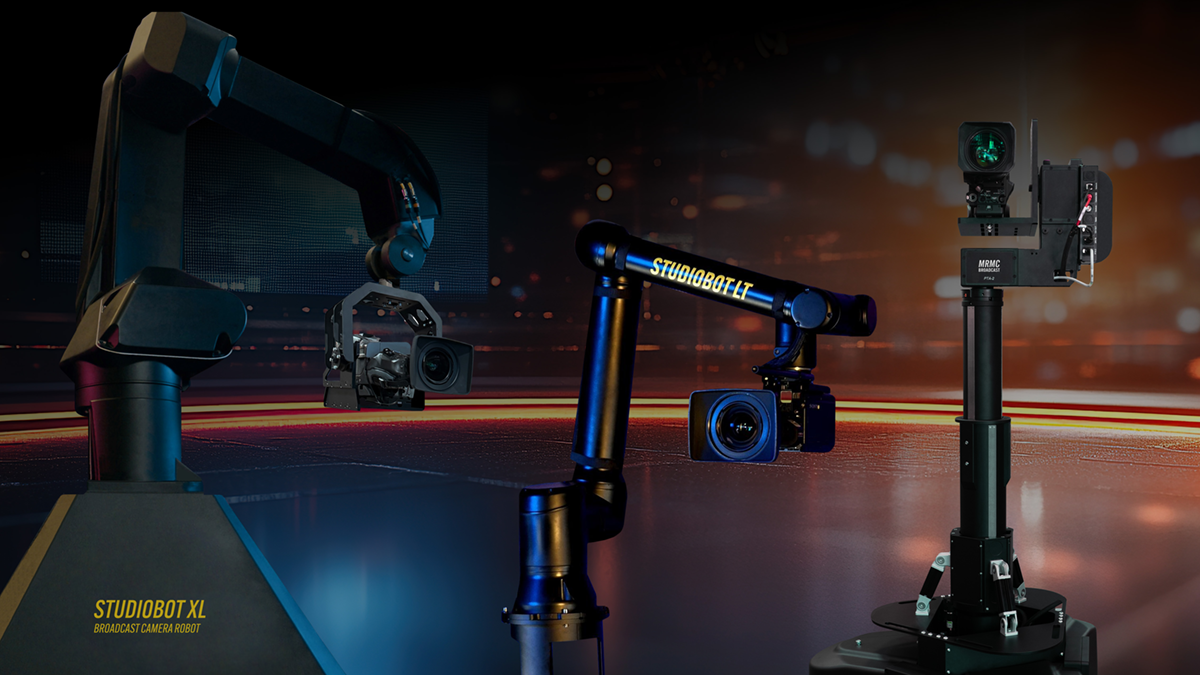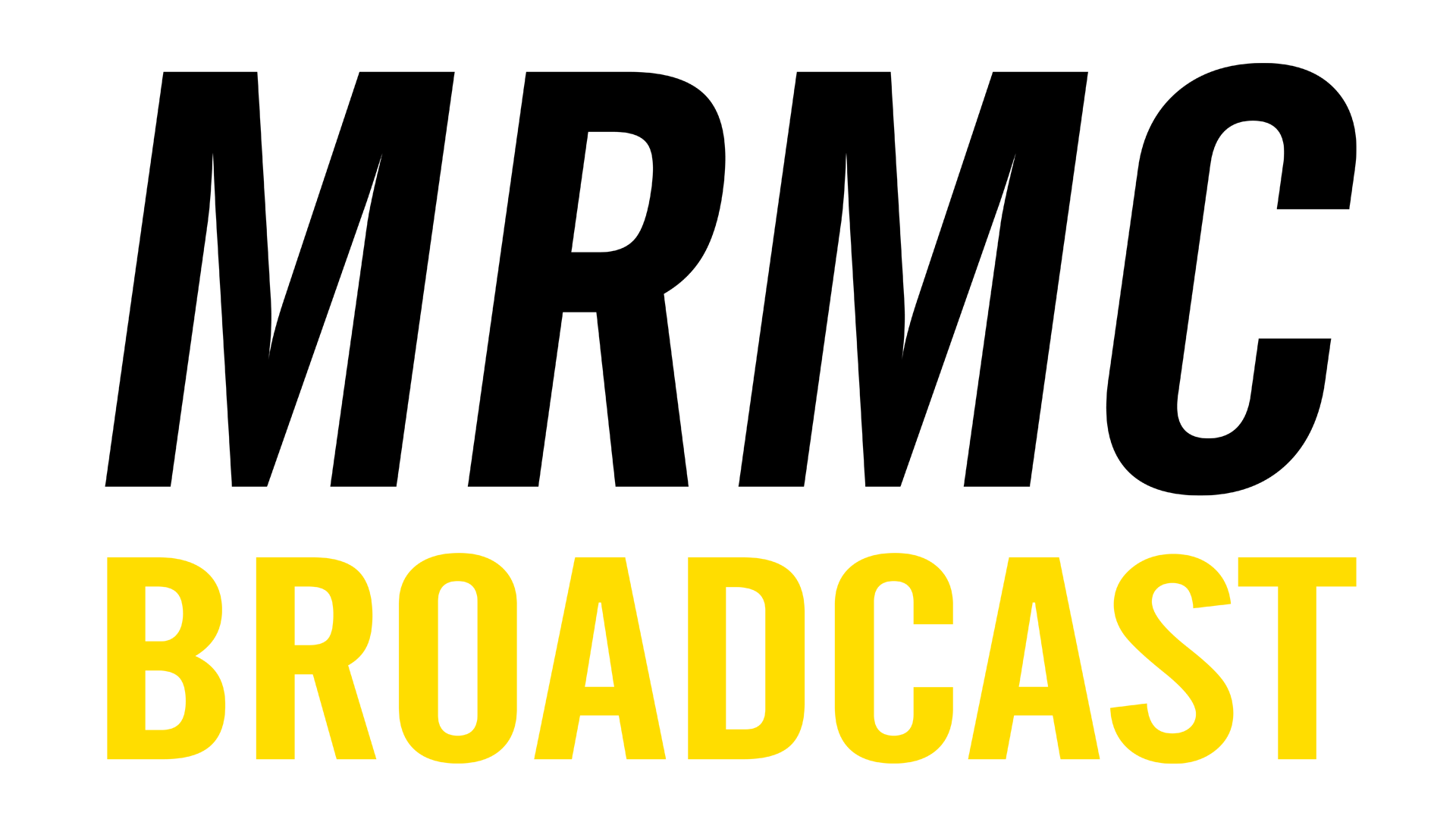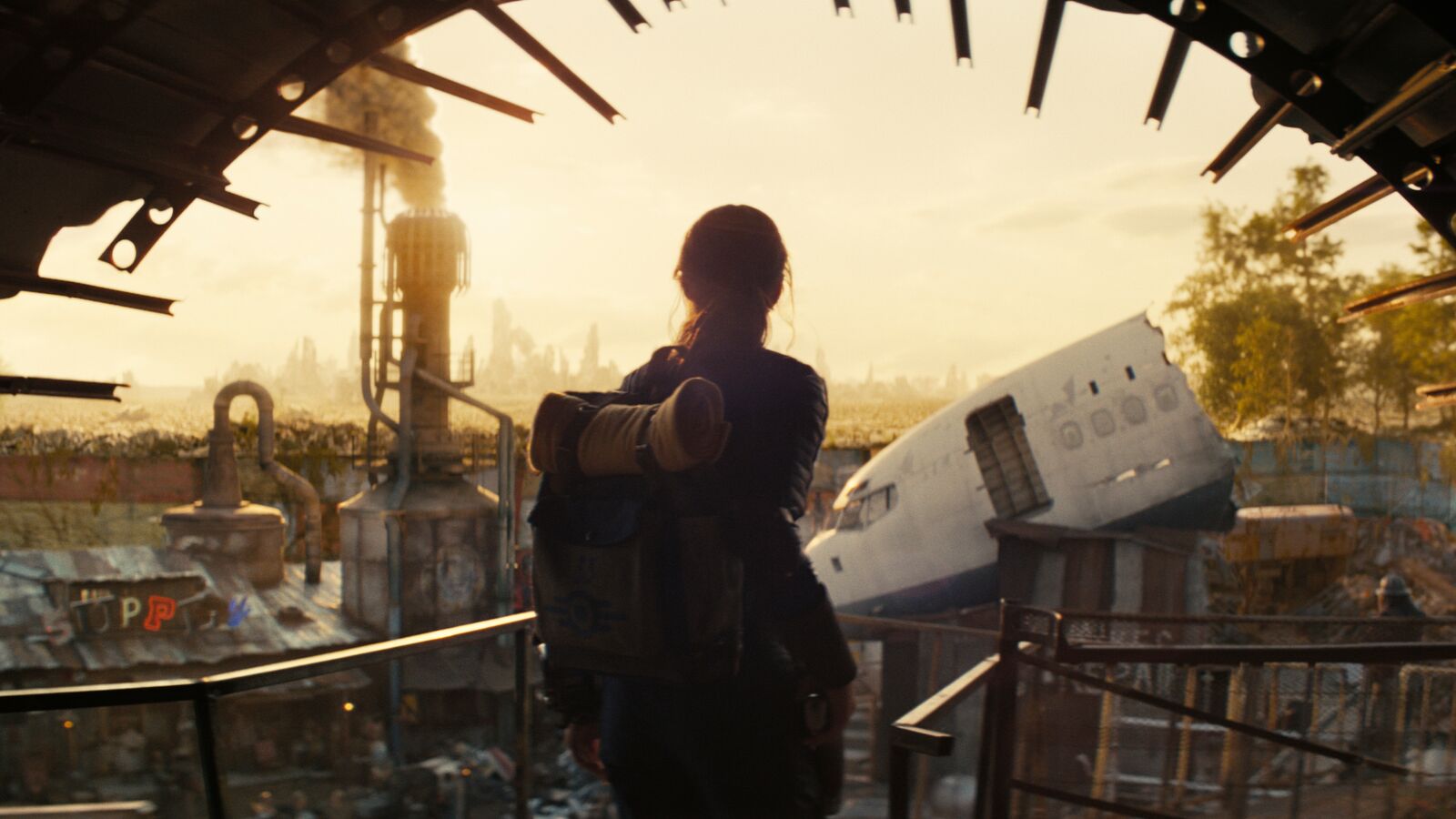Sponsored: How To Bring Cinematic Moves To Local TV News
Leveraging the latest robotics technology newscasts can move cameras smoothly around anchors, reporters and AR graphics to engage viewers on an entirely new level

Camera robotics and local newscasts go hand in hand. For years, stations have added robotic pedestals operating under automation control to improve workflows, save on expenses and ensure consistency.
But there’s much more to robotics and newscasts—especially if the goal is to add striking cinematic camera moves with the range and fluidity of camera motion associated with Steadicam rigs without incurring the initial cost of equipment and recurring expense of an operator.
For those types of moves, a robotic arm mounted to a robotic pedestal or track system can unlock the true potential of camera movement by enabling cinematic camera motion.
Leveraging the latest robotics technology, such as the MRMC StudioBot multi-axis robotic arm, newscasts can move cameras smoothly behind and around anchors, reporters and AR graphics to engage viewers on an entirely new level.
Similarities and Differences
The technology that creates cinematic camera movement shares many characteristics with the robotic pedestals in use at many local stations. For instance, both ensure camera movements are precise and repeatable. Both also move cameras without a heavy reliance on skilled workers and the physical stamina of operators. Both can even support a full-sized studio teleprompter.
Like the robotics used today at stations, a robotic arm or robotic arm-pedestal combination is cost-effective over time, streamlining labor and operator costs, and when it comes to MRMC’s StudioBot, the robotic arm can be integrated into a Media Object Server (MOS)-based news automation rundown.
There is one critically important difference that distinguishes a robotic arm or robotic arm-pedestal combination from traditional robotic studio camera setups: specifically, unmatched creativity.
The professional video industry's #1 source for news, trends and product and tech information. Sign up below.
When combined with virtual sets and augmented reality (AR) graphics, the freedom of movement MRMC’s robotics offers and their seamless integration into this virtual world create opportunities to engage viewers more deeply in stories and experience news in a way that holds their attention.
A track-mounted robotic arm or one mounted to a robotic pedestal can follow an anchor or reporter walking around a news set. They can shoot behind reporters and anchors as well as move smoothly around AR graphics to reveal critical details viewers need to understand certain types of stories. While sets may change, the range of motion and repeatability of shots allow newscasts to maintain a consistent look. Operators benefit as well because they will remain familiar with the types of shots and workflow required.
The How-To
Creating this type of cinematic camera movement on a news set requires the right combination of hardware and software. From a hardware perspective, stations will need one or more multi-axis robotic arms. They can be mounted to the floor, the ceiling or a track system. The MRMC StudioBot can also be mounted on a robotically controlled pedestal, offering maximum creative and placement freedom.
Software essential to creating cinematic camera moves in the confines of a TV studio includes AI-powered talent tracking, collision-avoidance LiDAR scanning and MOS-compliant production automation software. If multiple systems are needed, software to control multiple cameras and multiple robotic systems will also be necessary.
Understanding a bit of the back story of MRMC, or Mark Roberts Motion Control, makes it clear why the company can help broadcasters make striking cinematic camera moves part of their newscasts.
MRMC was founded in 1966 when its sole focus was building rostrum animation camera stands, which led to developing motion control camera tech for the film industry. The effort included the development of motion control camera tracking software and camera rigs as well as push motion control rigs. Since then, studios and producers have relied on MRMC solutions to make thousands of movies, episodic television shows and commercials.
For its efforts, MRMC has received multiple awards, including an Academy Award for Technical Engineering as well as the Queen’s and King’s Award for Enterprise: International Trade. The company’s technology has even made it to outer space, assisting SpaceX and Boeing with automated docking with the International Space Station.
In 2017, Nikon acquired MRMC and since then has supported the company in its mission to bring motion expertise to television broadcasters and producers. Major broadcasters now use MRMC robotic camera systems for introducing and connecting sequences between live news segments, remote VR-based productions for major sporting events and adding camera control and cinematic motion to broadcasts from small studio spaces.
MRMC Systems For Local TV
To make it possible for local stations to add cinematic camera moves in their news studios, MRMC has developed a range of technology solutions, including:
- StudioBot XL—a 9-axis robotic arm with a 5’8” reach that can support 44 pounds, including a camera, lens and teleprompter. Quick and easy deployment; enables integration into AR and VR setups.
- StudioBot LT—a 6-axis robotic arm with a 4’2” reach that can support 22 pounds. Its compact design offers exceptional flexibility, enhancing production quality in the most confined spaces.
- Prompter support, including a PTZ prompter.
- Robokam control/automation software—MOS-compliant software that enables news producers to trigger cinematic camera moves from newscast rundowns, create dynamic motion paths and control multiple robotic camera systems.
- Track Robotic Head (TRH), a lift column that runs on rails and can also carry a teleprompter.
- Rail Lift Systems (RLS), a cost-effective solution that combines lightweight lift with horizontal rails, creating jib-like motion from the floor, wall or ceiling. Perfect for adding motion to PTZ cameras.
- Polymotion Chat—AI-driven, automatic talent tracking software leveraging a computer vision engine that detects limbs and builds stick models to track subjects more reliably than face-tracking solutions. Supports multi-camera production and allows for people to be occluded by walking in front of one another.
For stations that have previously invested in robotic camera solutions and pedestals, MRMC enables stations to integrate its robotic camera arms into existing studio workflows, while offering a full range additional solutions to support PTZ, studio and cinecameras, creating a pathway to cinematic camera moves while enabling stations to fully amortize their current systems.
Affordability
Local stations have a long history of adopting technologies—some quite expensive, like news choppers—to stay one step ahead of the competition, build bigger audiences and ultimately earn higher ad revenues. When considered in the context of vital news tech investments over the years like ENG and SNG vehicles, helicopters and production control room equipment, the technology required to add striking cinematic camera moves to local news is affordable.
Not only will this technology pay for itself over a three- to five-year period, but it also offers local stations a way to compete more effectively with cross-town TV rivals and the digital platforms Americans increasingly cite as their go-to sources for news.
Adding MRMC robotic solutions to newscasts isn’t an all-or-nothing proposition. Stations can augment their existing robotic pedestals by separately adding a ceiling track-mounted MRMC StudioBot, for example, to introduce cinematic camera movement while continuing to derive the full value of their investment in existing robotics and replacing those less-capable systems when that technology approaches its end of life.
Given the highly competitive nature of local TV and the never-ending mission of building audience, stations would do well to evaluate the expense of the tech needed to create cinematic robotic camera moves not simply on the basis of its price tag, but also on the cost of doing nothing and missing out on all of the advantages these systems bring to local news.

MRMC Broadcast is a leading provider of camera robotics systems built on intelligent automation for virtual production and remote acquisition. As the industry shifts toward more agile workflows, MRMC Broadcast continues to deliver solutions aligned with emerging trends to enable greater flexibility, scalability, and creative freedom across studios, live productions, and hybrid environments. Learn more here.
